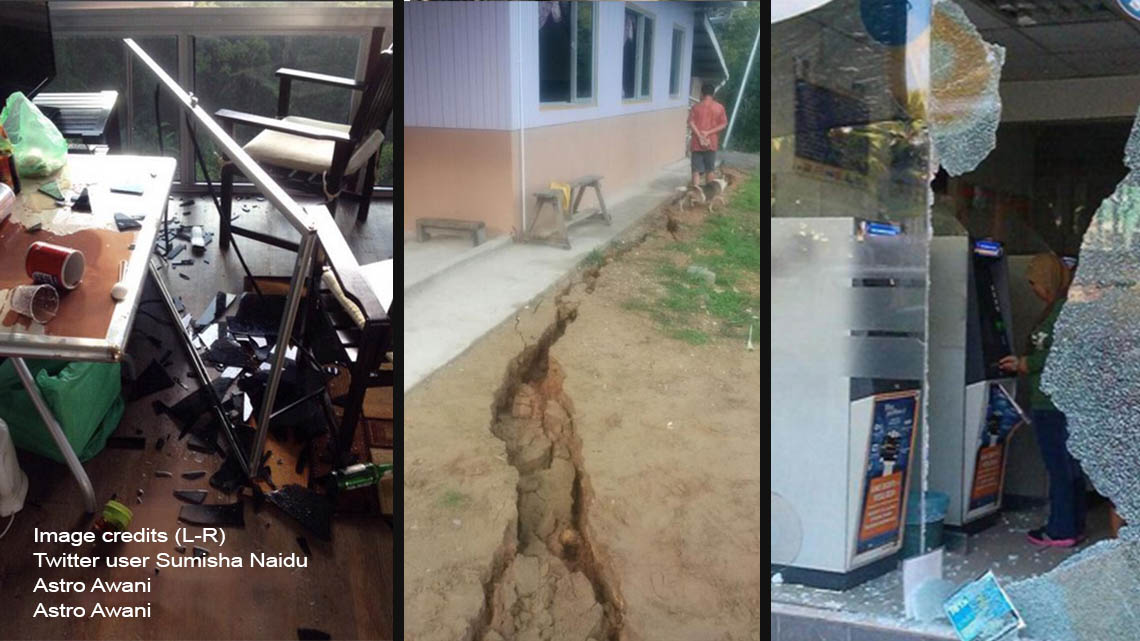The mysteries of Mt. Kinabalu told through science & culture

- 50Shares
- Facebook28
- Twitter5
- LinkedIn5
- Email6
- WhatsApp6
Well, well, well, if it isn’t the month that our very own Kinabalu Park, home to the mighty Mt. Kinabalu, was listed as Malaysia’s first World Heritage Site. Back in December 2000, UNESCO gave them the official nod, acknowledging their incredible biodiversity of over 4500 types of flora and fauna, 300+ birds and 100 mammalian species. And ofc, the fact that the park cradles the loftiest mountain in all of SEA Malaysia.
Such wow! Much applause!
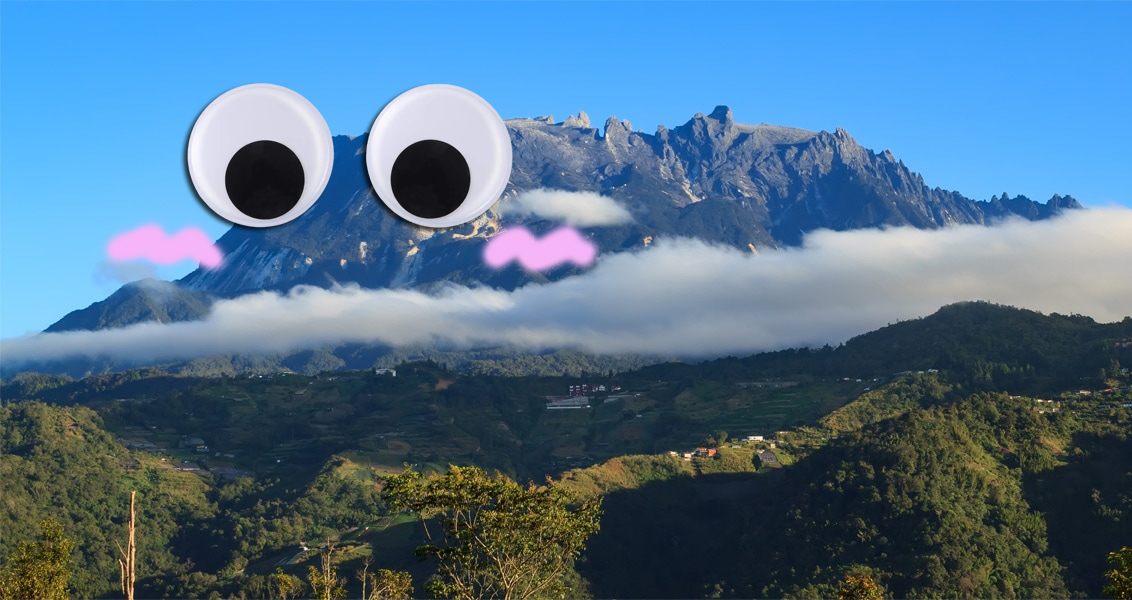
Last time around you guys devoured our piece on Mt. Kinabalu’s controversial status as the tallest mountain in SEA. So we thought why not celebrate this anniversary with more Gunung Kinabalu tidbits. Except this time, we’ll be diving into the bizarrely wonderful things you can see at the mountain. Some of them you might know, like the viral golden halo that happened a while back. We’ll be using a dash of science to explain these wonders… and also, a sprinkle of ✨myth✨
But before we get into that, did you know it wasn’t just humans living at Mt Kinabalu but deities and giants too?
Mt. Kinabalu’s distinct rocky terrain…is in fact a giant’s face??
According to an age-old Kadazandusun myth, the universe was created by deities Kinoingan and his wife, Suminundu. While the wife crafted the earth, the husband was in charge of everything above it, including the sky and clouds. And later, when they were done with their tasks, they sent the eagle Kondiu to assess their creations. But Kondiu had something rather shocking to report–
The sky was too small!
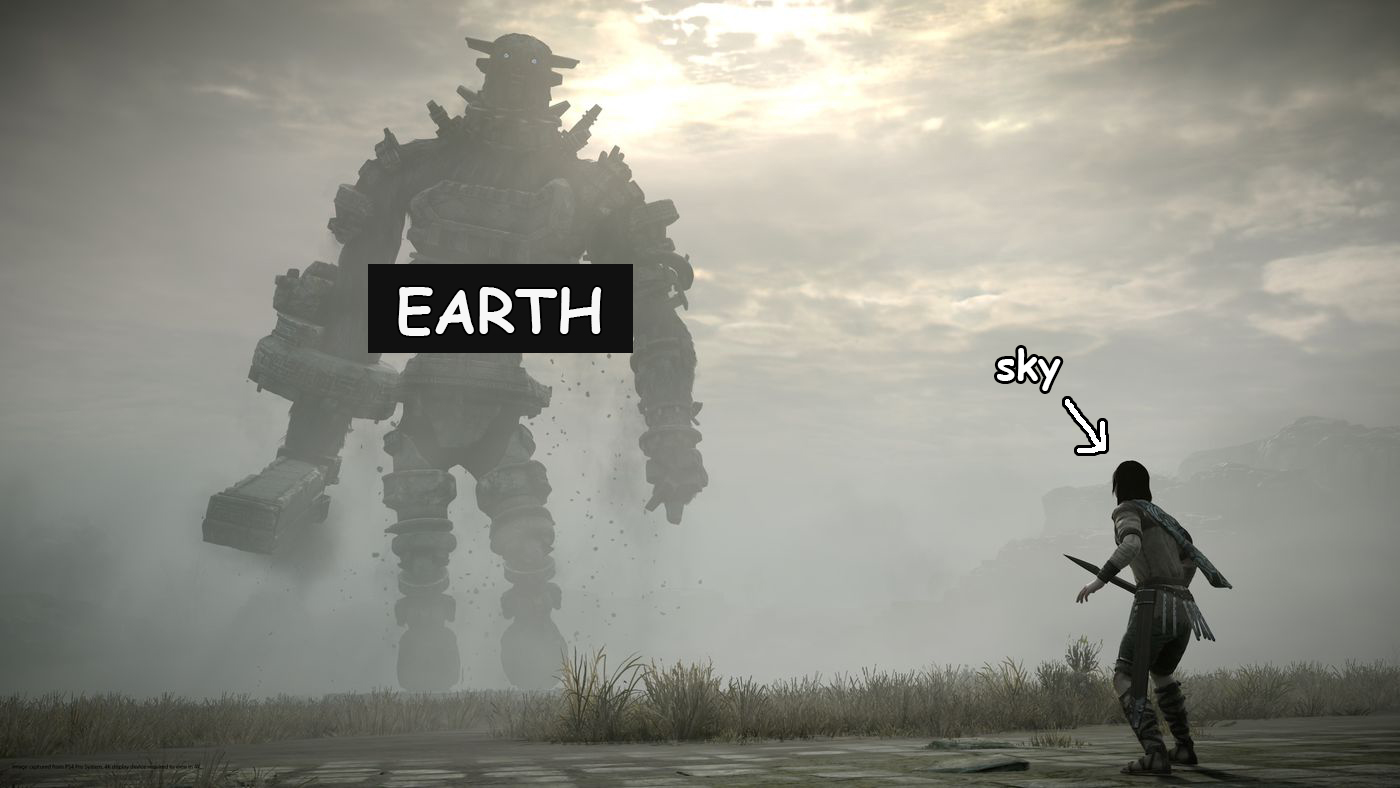
Kinoingan was ashamed of his blunder. Suminundu, understanding his feelings, decided to reshape the earth instead to match the size of her husband’s clouds. And as she did so, she created a mountain which she called Kinabalu or Kinorungoi–which was to be the heart of the world.
Well, if that isn’t the most romantic thing ever!

Apart from that, there’s a completely different story that explains the super rocky terrain of Mt. Kinabalu. And this one has to do with a giant king called Gayo Nakan, which literally means Big Eater. Well, that name was pretty on the nose, because it was said that Gayo Nakan had a massive appetite.
The people living near the mountain had a tough time keeping Gayo Nakan fed, and they couldn’t stop complaining about it. Fed up with the situation, Gayo Nakan pretty much snapped and told them to just bury him alive. But even that turned out to be too difficult, so the king eventually took things into his own hands and buried himself. Though he kind of only did it up to his shoulders.

But it wasn’t over yet. Gayo Nakan was so disappointed the people did such a poor job with the burial that he cursed them with drought and famine. Well, it’s not our place to remark on the fickleness of this king, but he did also promise the people he would come to their aid in times of war. And ever since then, the locals performed sacrificial offerings at ‘the wishing pool below the summit that was the king’s grave‘.
And allegedly, it’s the twists and turns of Gayo Nakan’s shoulders and head protruding from the earth that shape the mountain’s rocky surface.
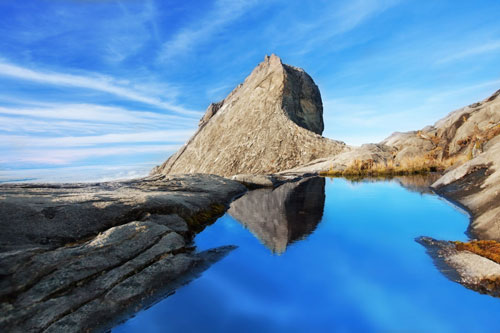
Phew, that’s some dark stuff, so let’s shift gears into something a little more bright… and golden.
The ring of sunlight that fooled everyone into thinking it was a golden halo
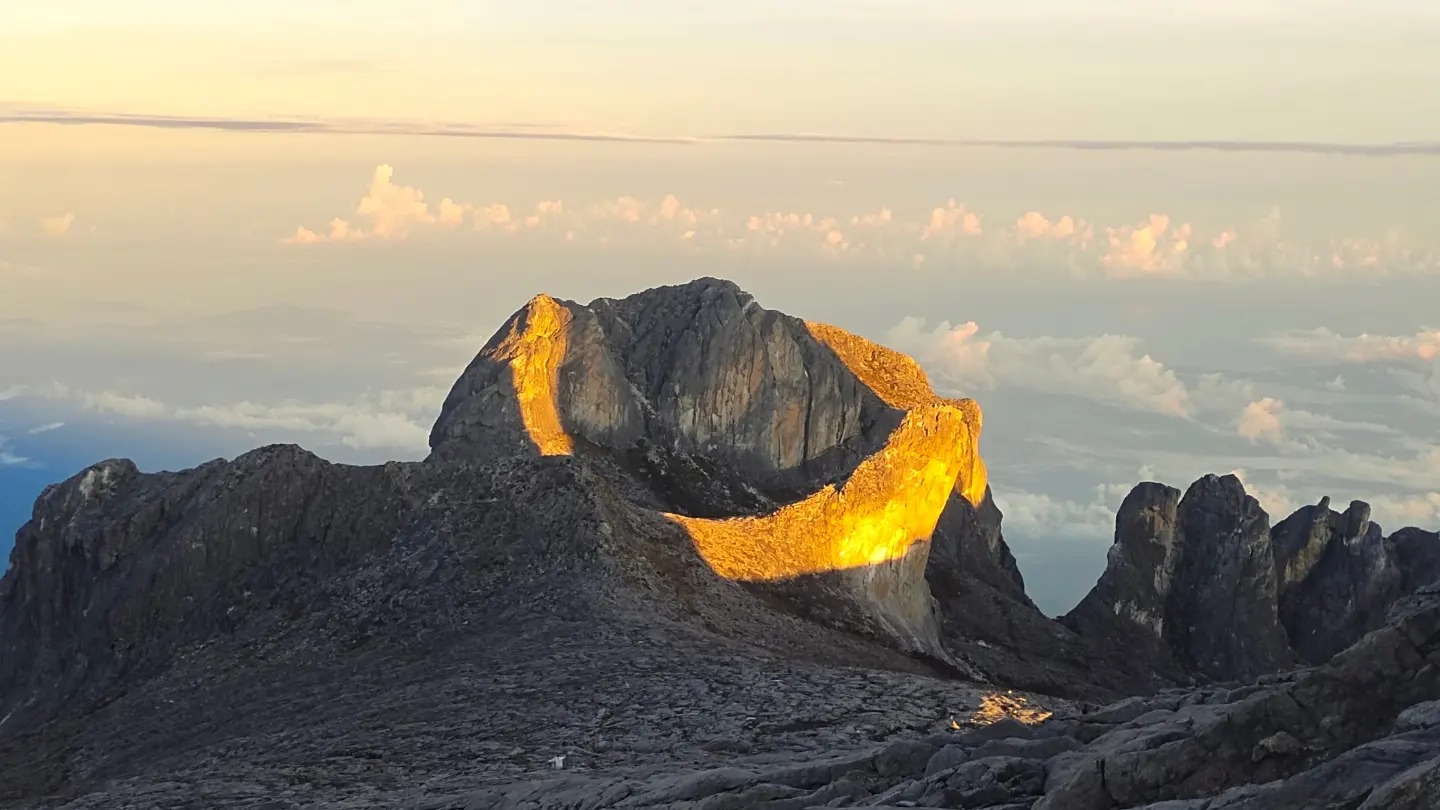
When we say this picture made rounds on social media, even news outlets were reporting on it! So many people thought it was photoshopped (including our new Cilibos 😶). But truth be told, what you’re witnessing is simply the morning sunlight striking the peak at a very precise angle.
Apparently you can see this sort of thing if you’re standing at Kinabalu’s tallest peak, Low’s peak (ugh, let’s not even start with the irony of that name), and you’re looking towards the Alexandra and Oyayubi Iwu peaks.

Despite the simplicity of that explanation, it didn’t stop netizens from speculating what it could be, and goodness, did they open our eyes to a whole lot of local culture!

Among the stuff they brought up were golden necklaces and rings–basically all that bling bling. One even said it looked like the chest patch on a sun bear!
Fun fact, these bears are actually native to Southeast Asia and true to their name, they’re sun enthusiasts. Often times, they’ll be lounging in trees just soaking up those golden rays, so it might just be fitting that the sun reflecting on the mountain kind of gives off those sun bear vibes.

But what really caught people’s attention was how much it looked like a golden dragon. Well, after a bit of sleuthing, we stumbled upon a local myth explaining how Kinabalu got its name, involving none other than a golden dragon.
There are actually many variations to the story, but one of them revolves around the name Kina Balu. Kina here means China, and Balu translates to Widow. As the story goes, there was once a golden dragon guarding a precious and magical jewel at the summit of the mountain. Many Chinese soldiers tried their luck to seize this jewel but they failed and perished, leaving their wives as widows. Hence the name, Chinese Widow aka Kinabalu.

Stepping away from the mystic and enchanting, netizens pointed out another intriguing detail. The golden ring on Mount Kinabalu bore a striking resemblance to the Sigah, a traditional Kadazandusun headgear. But what’s fascinating here is that the Sigah is intricately folded to emulate the very shape of Mt. Kinabalu itself. 🫨🤯
Now that’s what we call a double coincidence!
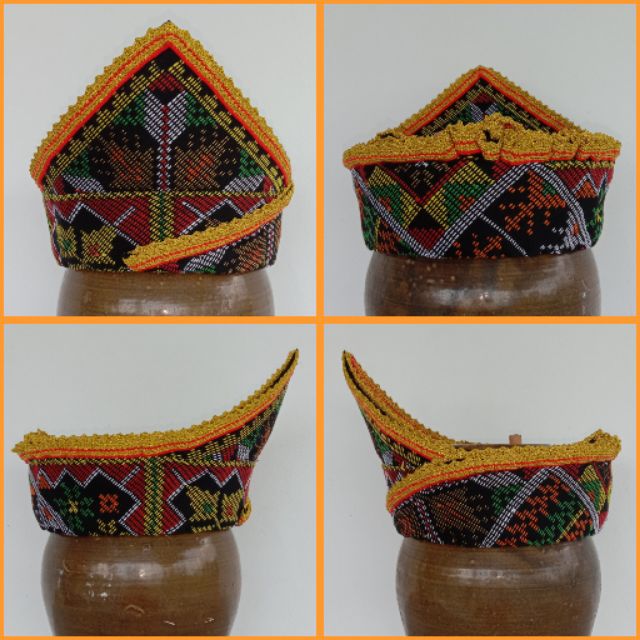
But this isn’t the first time this headpiece has been brought up when talking about the amazing eye-catching things that happen at the mountain. All the way back in 2018…
Wind and temperature sculpted Mt Kinabalu its own cloud-shaped Sigah

So how … do you guys see it?
To help you out, here are some people wearing the Sigah for comparison’s sake.
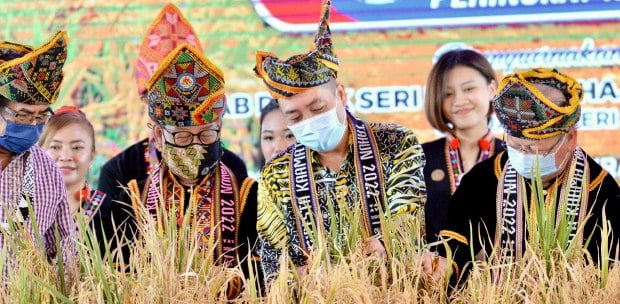
Now, here’s a cool nugget of info for you–the Sigah is a woven textile that features geometric designs and is decked out with vibrant yellow lace. The colour yellow especially holds particular significance. In the Kadazandusun community, yellow is a symbol of unwavering brotherhood and familial ties that persist through any separation, be it distance or time. There are several ways to tie the Sigah, but most commonly, it’s folded into the shape of Mt. Kinabalu.
That said, we definitely think there’s some resemblance between the clouds and the Sigah.
Speaking of which, the correct term for those twisty clouds is in fact lenticular clouds.

Basically, when the wind bumps into a mountain or something tall, these cool cloud swirls happen. The air goes up, cools down, and bam—the clouds form. One side of the mountain gets a sharp-edged cloud, and the other side gets a smooth one, giving the clouds a very particular look. In fact, they sometimes get called UFO clouds because of their circular shape.
You would think that clouds being clouds, they would travel, what more with all that wind, but lenticular clouds actually stay in place and cause a lot of turbulence so they’re basically a pilot’s number #1 enemy. And it’s not just aircraft fliers who sense the bad juju from these things. Local Kundasang and Pekan Nabalu folks believe the clouds are a sign of an oncoming drought. Interestingly, we found a publication that confirmed that these clouds and their accompanying strong winds do actually make it difficult to get rain.
And that really just emphasises the fact that at the end of the day…
Mt. Kinabalu is full of curious anomalies that are tied to local culture
From the Sigah clouds causing drought, to the buried giant responsible for the rocky terrain–science and culture meet at every peak on Mt. Kinabalu. In essence, the mountain is not just a geographical landmark, it’s a true blend of cultural heritage and natural wonders.
Frankly speaking though, we’ve only scratched the surface of all the myths and legends to do with Mt. Kinabalu, so if that’s something you guys are interested in diving into, let us know and we just might make a part 3!
- 50Shares
- Facebook28
- Twitter5
- LinkedIn5
- Email6
- WhatsApp6


